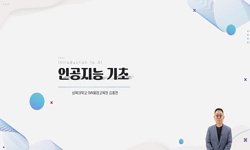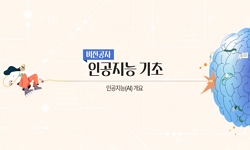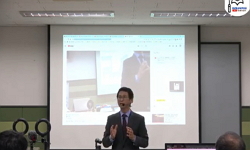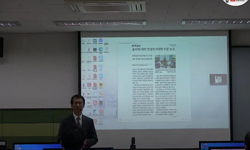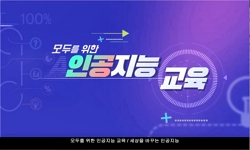It is no exaggeration to say that almost all rights and obligations under the Copyright Law have been enacted centering on the author, as the author is the most important element in the Copyright Law. Therefore, when new subject matter or technology e...
http://chineseinput.net/에서 pinyin(병음)방식으로 중국어를 변환할 수 있습니다.
변환된 중국어를 복사하여 사용하시면 됩니다.
- 中文 을 입력하시려면 zhongwen을 입력하시고 space를누르시면됩니다.
- 北京 을 입력하시려면 beijing을 입력하시고 space를 누르시면 됩니다.

인공지능 생성물의 저작권법상의 보호 방안 — 중국 저작권법상 직무저작제도의 적용여부를 중심으로 — = Protection measures under copyright law for artificial intelligence products — Focusing on the application of the Work Made for Hire in China's Copyright Law —
한글로보기부가정보
다국어 초록 (Multilingual Abstract)
It is no exaggeration to say that almost all rights and obligations under the Copyright Law have been enacted centering on the author, as the author is the most important element in the Copyright Law. Therefore, when new subject matter or technology emerges as society develops, the first issue to be dealt with in copyright law is also the issue of authors. For example, if the current work-for-hire system was born due to copyright issues against corporations, and if a work was produced by a computer with the advent of computers in the 20th century, who would be the author of that work? Problems with authors of various subjects have arisen. Recently, the issue of authorship or copyright attribution has also arisen in products generated by artificial intelligence. Therefore, in the following content, we will examine examples of products created by artificial intelligence, and from this we will derive what kind of role humans will participate in the process of creating artificial intelligence products. We investigated whether it is possible to protect copyrighted works under corporate copyrighted “corporation work” and “works-for-hire” regulations. In other words, based on the form and type of human participation in the overall process of generating artificial intelligence products from artificial intelligence examples, ① When a human participates in creative acts and directly contributes to the originality of the relevant product, ② When humans participate indirectly by indirect actions, influencing the general direction and structure of the product through imperative actions such as directing and supervising, rather than creative actions, ③ AI can operate without human action. It can be classified into a total of three types, which is the action of pressing the “start button”. Here, in the case of ① and ③ whether or not a work can be clearly protected can be determined based on whether or not it participated as a human creative act, but in the case of ② the problem is not a creative act but an imperative act. is. In conclusion, the case of ② is subsumed by the corporate work regulations and the work for hire regulations, which are the work-for-hire system under the Chinese Copyright Law, in an attempt to protect artificial intelligence products.
국문 초록 (Abstract)
저작권법에서 저작자는 가장 핵심적인 요소로서 저작권법상 거의 모든 권리의무가 저작자를 중심으로 제정되었다고 하여도 과언이 아니다. 하여 사회가 발전함에 따라 새로운 주체 또는 기...
저작권법에서 저작자는 가장 핵심적인 요소로서 저작권법상 거의 모든 권리의무가 저작자를 중심으로 제정되었다고 하여도 과언이 아니다. 하여 사회가 발전함에 따라 새로운 주체 또는 기술이 등장하였을 경우 저작권법에서 가장 먼저 다루어지는 문제가 저작자에 대한 문제이기도 하다. 예컨대, 최초로 법인에 대한 저작권 문제로 인하여 지금의 직무저작제도가 탄생하였고, 20세기 컴퓨터의 탄생으로 컴퓨터로 저작물을 제작한 경우 해당 저작물의 저작자가 누구인가? 등 다양한 주체의 저작자에 대한 문제가 발생하였다. 이는 최근 인공지능에 의하여 생성한 생성물에서도 저작자 또는 저작권의 귀속의 문제가 발생하고 있다. 그러므로, 아래 내용에서는 인공지능에 의한 생성물에 관련한 사례를 살펴보고 이로부터 인공지능 생성물의 생성과정에서 인간이 어떤 역할로 참여 하는지를 도출하여 현행 중국 저작권법상 직무저작제도인 법인저작물규정과 직무저작물 규정으로 보호가능 한 지에 대하여 살펴보았다. 즉, 인공지능 사례로부터 인공지능 생성물 생성의 전반과정에서 인간이 참여하는 형식과 유형을 기준으로 ① 인간이 창작적 행위로 참여하여 해당 생성물의 독창성에 직접적인 기여를 한 경우, ② 인간이 창작적 행위가 아닌 지휘・감독 등 명령적 행위로 생성물의 큰 방향과 구성에 영향을 주어 간접적인 행위로 참여한 경우, ③ 인간이 아무런 행위도 하지 않고 인공지능이 작동할 수 있도록 ‘시작 버튼’을 누르는 행위인 총 3가지 유형으로 분류할 수 있다. 여기서, ①③의 경우 인간의 창작적 행위로 참여하였는지를 기준으로 명확하게 저작물 보호할 수 있는지 여부를 결정할 수 있으나, ②의 경우 창작적 행위가 아닌 명령적 행위가 문제가 되는 것이다. 결론적으로 ②의 경우를 중국 저작권법상 직무저작제도인 법인저작물 규정과 직무저작물 규정으로 포섭하여 인공지능 생성물을 보호하려는 것이다.
1 박성호, "저작권법" 박영사 2017
2 오승종, "저작권법" 박영사 2016
3 계승균, "인공지능과 지식재산권" 한국지식재산연구원 2020
4 계승균, "인공지능 창작물의 현행 법규범 내에서의 활용방안" 한국법학원 182 (182): 228-253, 2021
5 정진근, "영국 CDPA 제9조 제3항은 인공지능 창작을 보호하는가?" 한국저작권위원회 33 (33): 5-40, 2020
6 장주영, "미국저작권 판례" 육법사 2017
7 梁志文, "论人工智能创造物的法律保护" (5) : 2017
8 半田正夫, "著作権法概説" 一粒社 1999
9 崔国斌, "著作权法-原理与案例" 北京大学出版社 2019
10 陆飞, "职务作品及著作权归属探析" (1) : 1996
1 박성호, "저작권법" 박영사 2017
2 오승종, "저작권법" 박영사 2016
3 계승균, "인공지능과 지식재산권" 한국지식재산연구원 2020
4 계승균, "인공지능 창작물의 현행 법규범 내에서의 활용방안" 한국법학원 182 (182): 228-253, 2021
5 정진근, "영국 CDPA 제9조 제3항은 인공지능 창작을 보호하는가?" 한국저작권위원회 33 (33): 5-40, 2020
6 장주영, "미국저작권 판례" 육법사 2017
7 梁志文, "论人工智能创造物的法律保护" (5) : 2017
8 半田正夫, "著作権法概説" 一粒社 1999
9 崔国斌, "著作权法-原理与案例" 北京大学出版社 2019
10 陆飞, "职务作品及著作权归属探析" (1) : 1996
11 邹晓红, "智力投入者和财力投入者分离下的著作权归属研究-评我国委托作品, 职务作品和法人作品制度" (2) : 2010
12 谢琳, "拟制作者规则下人工智能生成物的著作权困境解决" (5) : 2019
13 李晓宇, "人工智能生成物的可版权性与权利分配刍议" (6) : 2018
14 孙山, "人工智能生成内容著作权法保护的困境与出路" (11) : 2018
15 熊琦, "人工智能生成内容的著作权认定" (3) : 2017
16 刘强, "人工智能创作物雇佣作品保护模式研究" (3) : 2020
17 胡康生, "中华人民共和国著作权法释义" 法律出版社 2002
18 Robert Yu, "The Machine Author: What Level of Copyright Protection is Appropriate for Fully Independent Computer Generated Works" 165 (165): 2017
19 Ralph D. Clifford, "Intellectual Property in the Era of the Creative Computer Program: Will the True Creator Please Stand Up" 71 (71): 1997
20 Ryan Abbott, "Hal the Inventor: Big Data and Its Use by Artificial Intelligence" 14 : 2016
21 Andrew J. Wu, "From video games to artificial intelligence: assigning copyright ownership to works generated by increasingly sophisticated computer programs" 25 (25): 1997
22 Darin Glasser, "Copyrights in Computer-Generated Works: Whom, if Anyone, Do We Reward?" 1 (1): 2001
23 Annemarie Bridy, "Coding Creativity: Copyright and the Artificially Intelligent Author" 5 : 2012
24 Timothy L. Butler, "Can a Computer be an Author - Copyright Aspects of Artificial Intelligence" 4 (4): 1982
25 Kalin Hristov, "Artificial Intelligence and the copyright Dilemma" 57 (57): 2016
26 Kalin Hristov, "Artificial Intelligence and the copyright Dilemma" 57 (57): 2016
동일학술지(권/호) 다른 논문
-
- 한양대학교 법학연구소
- 이종덕
- 2022
- KCI등재
-
부가가치세법상 대리납부의무의 ‘용역의 국내공급’ 요건에 관한 연구
- 한양대학교 법학연구소
- 오윤
- 2022
- KCI등재
-
지식재산분야 징벌손해배상제도에 관한 고찰 — 한중 양국의 비교를 중심으로 —
- 한양대학교 법학연구소
- 심현주
- 2022
- KCI등재
-
기술유출 방지를 위한 비밀특허제도의 개선방향에 대한 고찰 — 일본 경제안전보장추진법 및 기타 주요국과의 비교를 중심으로 —
- 한양대학교 법학연구소
- 조용순
- 2022
- KCI등재





 KCI
KCI KISS
KISS

